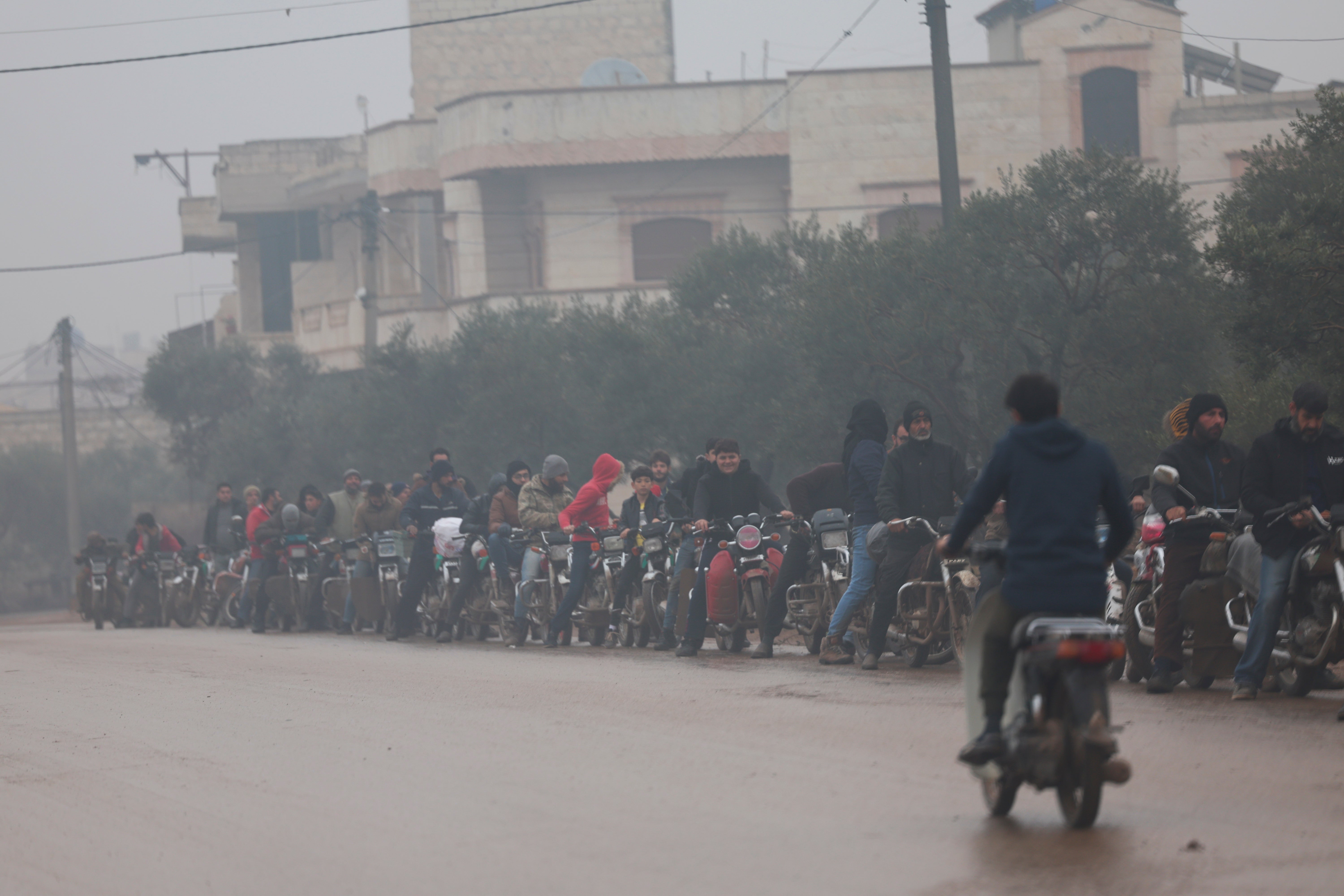Protests rock government-held areas in southern Syria as economy crumbles
Syrian opposition activists say protests have broken out in two government-held provinces in the south amid widespread anger over increasing prices, the crash of the Syrian pound and the dwindling purchasing power of many people in the war-torn country

Your support helps us to tell the story
From reproductive rights to climate change to Big Tech, The Independent is on the ground when the story is developing. Whether it's investigating the financials of Elon Musk's pro-Trump PAC or producing our latest documentary, 'The A Word', which shines a light on the American women fighting for reproductive rights, we know how important it is to parse out the facts from the messaging.
At such a critical moment in US history, we need reporters on the ground. Your donation allows us to keep sending journalists to speak to both sides of the story.
The Independent is trusted by Americans across the entire political spectrum. And unlike many other quality news outlets, we choose not to lock Americans out of our reporting and analysis with paywalls. We believe quality journalism should be available to everyone, paid for by those who can afford it.
Your support makes all the difference.Protests spread Monday in two government-held provinces in southern Syria amid widespread anger over increasing prices, the crash of the Syrian pound and the dwindling purchasing power of many people in the war-torn country, opposition activists said.
The rare protests are still limited to southern Syria and are far from government strongholds along the Mediterranean coast, the capital Damascus and the largest cities, including Aleppo and Homs.
The protests came a week after Syrian President Bashar Assad issued two decrees doubling public sector wages and pensions, sparking inflation and compounding economic woes for others.
The U.S. dollar has strengthened from 7,000 Syrian pounds at the beginning of 2023 to 15,000 now. At the onset of Syria’s uprising turned-civil war in 2011, the dollar was trading at 47 pounds.
The protests were concentrated in the southern city of Sweida, home to the country’s Druze minority, and the nearby province of Daraa, often considered the birthplace of Syria’s uprising 13 years ago. Sporadic protests in Sweida against the government and corruption have intensified and turned violent, while Daraa, back under government control since 2018, has experienced high crime and clashes between militias.
There was no immediate comment Tuesday from the government about the second day of protests in Sweida and Daraa.
On Sunday, the pro-government Sham FM radio station reported that final exams at branches of Damascus University in Sweida were postponed until further notice because some students could not reach campuses because of road closures.
Assad’s decision to hike wages and pensions comes as the cash-strapped government continues to restructure an expensive subsidy program for fuel, gasoline and wheat for bread. Soon after the decision, public transport and fuel fares increased. The economy has already been struggling after years of conflict, corruption and mismanagement, and Western-led sanctions on the government over accusations of war crimes and involvement in the illicit narcotics trade.
“We only kneel to God,” chanted dozens of protesters in the city of Sweida who were accompanied by Druze clerics, according to Suwayda 24, a news website run by activists in the region.
It said protesters were coming to the provincial capital from nearby villages.
The British-based Syrian Observatory for Human Rights, an opposition war monitor, reported that protesters closed main roads in Sweida, including the road leading to the local headquarters of Assad’s ruling Baath party.
In Daraa province, where protests against the government in March 2011 spread across the country, protesters marched in villages including Nawa, Jasem Sanamein and Dael calling for the downfall of Assad’s government and for the expulsion of Iranian influence from the region, according to opposition activist Ahmad al-Masalmeh. Iran has been a main backer of Assad, helping to tip the balance of power in his favor.
The United Nations estimates that 90% of Syrians in government-held areas live in poverty and that over half of the country’s population of 12 million struggles to put food on the table.